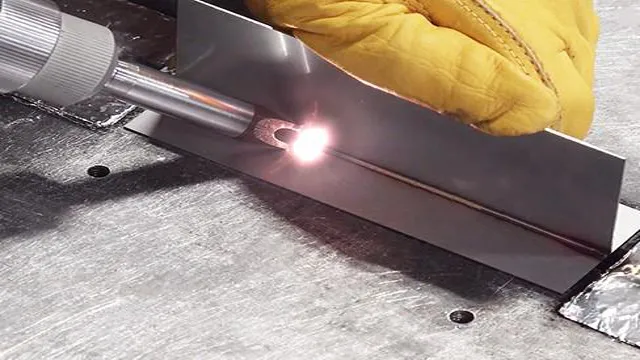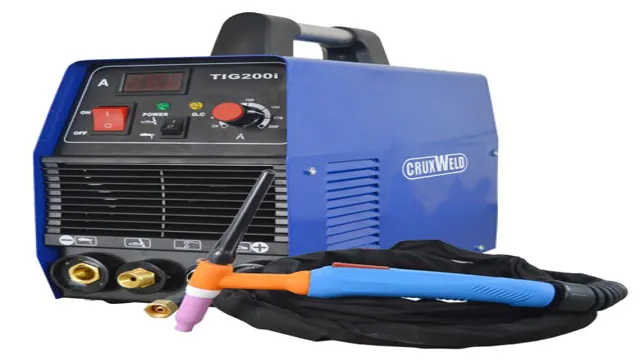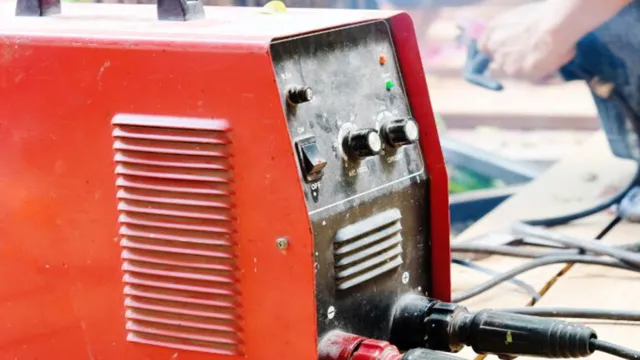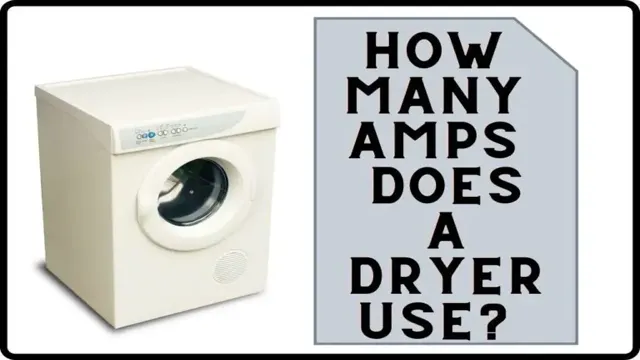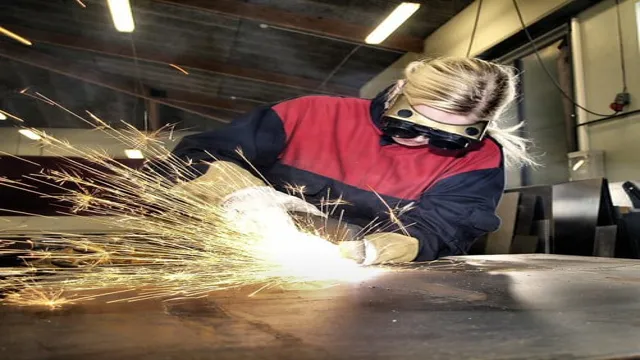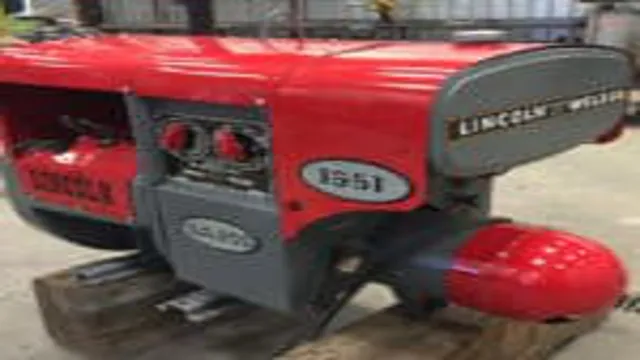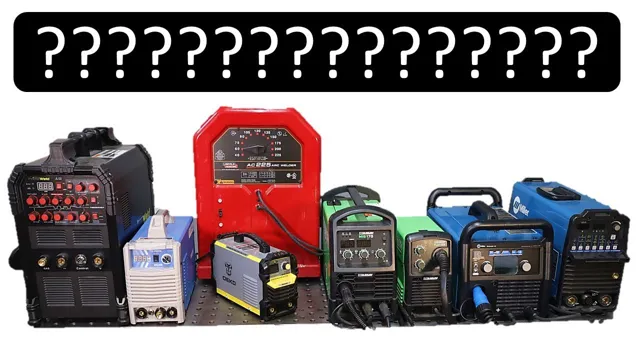Does a Welding Machine Use a Lot of Electricity? Power Consumption Explained.

If you’re someone who needs to use a welding machine on a regular basis, you might be wondering about how much electricity it uses up. This is a common concern, as welding machines are known to require a lot of energy to operate. Electricity usage can add up quickly and result in a high monthly bill, so it’s important to keep this in mind when using a welding machine.
Understanding how welding machines utilize electricity can help you make informed decisions about your energy use and possibly save you money in the long run. In this blog post, we’ll explore the relationship between welding machines and electricity usage, and provide some tips on how to maximize efficiency.
Introduction
As with any appliance, the amount of electricity a welding machine uses will depend on its power output and the length of time it is used. While welding machines vary in terms of their energy consumption, they typically do use a significant amount of electricity. This is because they require a considerable amount of power to generate the heat necessary for welding.
A welding machine typically draws between 20 and 80 amps of current, which can translate to anywhere from 2,300 to 9,200 watts of power consumption per hour. However, it’s important to keep in mind that this usage will vary depending on the type of welding being done, the thickness of the metal being welded, and the size of the welding machine itself. Nonetheless, even with these caveats, it’s safe to say that a welding machine does use a lot of electricity, particularly when compared to smaller household appliances.
Defining Welding Machine
A welding machine is a tool used to join two pieces of metal together through the use of extreme heat. It’s an essential tool for anyone working in metal fabrication or repair. There are several types of welding machines, each designed for different jobs, but the most common is the arc-welding machine, which uses an electric current to create an arc between the metal being welded and the electrode.
This generates heat, causing the metal to melt and fuse together. Welding machines come in all sizes, from small handheld units for light work to large industrial-sized machines capable of welding thick steel beams. Regardless of size, they all serve the same purpose, to melt and fuse metal together with precision and strength.

Importance of Welding Machines
Welding machines are essential equipment for various industries today. They are used to weld metals and produce high-quality products that are strong, durable, and long-lasting. Welding machines come in different types, including MIG, TIG, and stick welders, each with its unique advantages.
The strength and quality of a welding project depend on the type of machine used, the welding technique applied, and the skill of the welder. Welding machines have become critical to manufacturing, construction, and processing industries, making them an integral part of modern technology. Without them, it would be impossible to create complex structures, machines, and products that we use every day.
Therefore, investing in a high-quality welding machine is a wise decision for both businesses and individuals. By doing so, you can ensure efficient, reliable, and cost-effective welding operations that can boost your productivity and profitability.
Electricity Usage of Welding Machines
If you’re wondering whether a welding machine uses a lot of electricity, the answer is yes and no. It really depends on the type of welding machines and the extent to which you use them. Generally, stick welding machines consume a lot of electricity compared to MIG and TIG welding machines.
This is because stick welding machines utilize high amperage to create an arc, which requires more power from the electrical supply. On the other hand, TIG and MIG welding machines use a lower amperage to create an arc, which reduces the amount of electricity consumption. However, it’s important to note that the longer you use any type of welding machine, the more electricity it will use.
So, if you plan on using a welding machine for extended periods of time, you should expect to use a significant amount of electricity.
Factors that Affect Electricity Consumption
When it comes to electricity consumption, welding machines can use a significant amount of energy. The electricity usage of welding machines depends on a few factors, such as the type of welding process, the size of the machine, and the materials being welded. Welding with certain methods, such as arc welding, can consume more power than others.
It’s important to note that the bigger the machine, the more energy it requires to operate. Additionally, the type of material being welded can also impact energy usage, as some metals require higher temperatures and longer weld times, which results in increased electricity consumption. It’s essential to consider these factors when choosing a welding machine and taking steps to reduce energy consumption, such as using more energy-efficient models and adjusting welding techniques.
By doing so, companies can reduce their overall energy usage and lower their energy bills while still maintaining the same level of productivity.
Average Electricity Consumption of Different Welding Machines
When it comes to welding, understanding the electricity consumption of different machines is crucial. MIG (Metal Inert Gas) welding machines are some of the most commonly used types of welding machines, and they can consume anywhere from 100 amps to 600 amps of electricity per hour depending on the thickness of the materials being welded. TIG (Tungsten Inert Gas) welding machines, on the other hand, can consume around 200 amps to 400 amps per hour.
And if you’re using a Stick welding machine, you can expect it to consume around 200 amps to 600 amps per hour. Keep in mind that high amperage machines draw more electricity and will require a higher voltage power supply to operate effectively. So, the type of welding machine you choose will ultimately depend on the thickness of the materials you’re welding and the amount of electricity you’re willing to use.
It’s always best to consult with a professional to determine the best welding machine for your specific needs.
Comparison of Welding Machines and Other Electrical Appliances
When it comes to electricity usage for welding machines, it’s important to understand the differences between them and other electrical appliances. While many appliances, such as refrigerators and televisions, have a relatively constant power usage, welding machines use a lot more power in short bursts. This is because welding requires a high amount of energy in order to create a strong, lasting bond between two metal surfaces.
Because of this, welders often need to use a higher voltage and amperage than they would for other electrical tasks. While this can lead to a higher overall energy usage, it’s important to remember that welding machines are essential tools for a variety of industries, such as manufacturing and construction. Without them, it would be much more difficult to create strong, reliable metal structures.
So while they may use more energy than other appliances, welding machines are a vital part of many industries and play an important role in our daily lives.
Tips to Reduce Electricity Consumption
If you are a hobbyist or professional welder, you may be wondering, does a welding machine use a lot of electricity? The answer is, yes. Welding machines have high power consumption and can be one of the biggest energy-consuming tools in your workshop. But the good news is that there are several measures you can take to reduce your electricity consumption while using a welding machine.
For starters, you can choose a welding machine that is energy-efficient and has a lower input power. Another way is to ensure that your welding machine is serviced and maintained regularly to avoid energy wastage due to worn-out parts. Also, you can opt to weld during off-peak hours when the electricity rates are lower.
Lastly, you can incorporate some best practices like prepping your workpiece before welding to minimize mistakes and wastage of both material and energy. By following these tips, you can reduce the amount of electricity your welding machine uses and save on your energy bills.
Proper Maintenance of Welding Machines
If you want to reduce the electricity consumption of your welding machines while ensuring their optimum performance, there are several tips you need to keep in mind. First and foremost, you need to follow a regular maintenance routine that includes checking the welding cables for any damage or wear and tear, keeping the machine clean and free of dust and debris, and replacing the contact tips regularly. Another essential tip is to use the right welding technique that requires the lowest amperage possible to get the job done.
This not only saves energy but also reduces the risk of overheating and damaging the machine. Additionally, using energy-efficient welding consumables and accessories, such as low-consumption electrodes, can also help you cut your electricity bills significantly. By following these simple tips, you can ensure that your welding machines operate efficiently while minimizing your energy costs and carbon footprint.
Choosing the Right Welding Machine
When it comes to welding, choosing the right welding machine is essential to ensure quality results, efficiency, and safety. However, apart from the initial cost of the machine, another factor that you must consider is its electricity consumption. Here are some tips to reduce electricity consumption when using a welding machine: Firstly, avoid using a welding machine that is oversized or undersized for the job at hand.
Using a larger machine than required might seem like the right choice, but in reality, it may consume more electricity than needed. Alternatively, using a machine that is too small for the job might result in wastage of time, materials, and money. Secondly, always maintain and clean your welding equipment.
Dirty equipment tends to use more electricity and may not function optimally, leading to decreased efficiency. Finally, invest in welding machines that utilize energy-efficient technologies, such as inverters. Such machines produce less heat and consume less electricity than traditional welding machines.
Additionally, consider using alternative power sources such as solar or wind power to further reduce your electricity consumption and carbon footprint. By following these tips, you can reduce your electricity consumption when using a welding machine, helping you save on energy bills while being more environmentally conscious.
Conclusion
In the world of welding, power is everything. And while it’s true that a welding machine can consume a significant amount of electricity, it’s important to remember that this power is harnessed for a truly transformative purpose. Much like the welding process itself, this energy is used to bring disparate parts together and create something new and strong.
So while you may notice an uptick in your electricity bill after a particularly intensive welding project, take comfort in the fact that you’re not just consuming energy, you’re harnessing it to bring your visions to life.”
FAQs
How much electricity does a welding machine consume per hour?
A typical welding machine can consume anywhere from 6-16 amps per hour, depending on the type and settings used.
Is there a way to reduce the electricity usage of a welding machine?
Yes, using energy-efficient welding machines and adjusting the settings can help reduce electricity usage significantly.
Does the size of the welder affect its electricity usage?
Yes, generally larger welders will consume more electricity than smaller ones due to their higher power output.
Can using a generator with a welding machine reduce its electricity usage?
No, using a generator may actually increase electricity usage as they have their own energy losses and inefficiencies.
How can I calculate the electricity cost of running a welding machine?
You can calculate the electricity cost by multiplying the machine’s power in kW by the running time in hours and the cost per kWh.
Are there any power-saving tips for operating a welding machine?
Yes, some tips include turning off the machine when not in use, using lower voltage settings, and cleaning the machine’s filters regularly.
Can using lower-quality welding materials affect electricity usage?
Yes, using lower-quality materials may require higher power settings, leading to increased electricity usage.

